In Fidenza stands an opera house fit for Napoleonic royalty
Artistic director Antonio Delnevo chose three by Giacomo Puccini for the just-finished opera season. February means concerts in the gilded theatre with opera boxes from which to spy an Anna Karenina.
(All photos by David Scott)
At Teatro Magnani, in the north Italian town of Fidenza, seats go from €20 to €60. Royalty would have a designated box, center, says artistic director Antonio Delnevo. Today sees chamber music by Beethoven, Haydn and Stravinsky.
Antonio Delnevo is snaking through the Fidenza opera house today when a mysterious term rolls off his tongue.
“Let’s take a peek at the golfo mistico,” says Delnevo, the long-time artistic director at Teatro Magnani, where chamber music is set to take place in two hours.
As lithe as Laurence Olivier in “The Entertainer” (1960), the grandfather heads downstairs, mazing through the theatre’s catacomb corridors before reaching an empty space closed off on one side by red velvet and caging.
No, it’s neither a padded cell on Prozac nor a Hannibal hide-away. It’s the orchestra pit, used for three Puccini operas earlier this winter, when only those with certain views could see brass, strings, and woodwinds.
“It’s from here where the music rises up to the to the auditorium during opera,” says the native of Fidenza who for three decades has orchestrated what fills out the season’s line-up of opus wonders. “Golfo mistico is a poetic expression.”
As if in catacombs, Delnevo leads on.
Down below, Delnevo explains how instrumental music rises up when velvet and caging are pulled back and the pit is fit with orchestra.
Delnevo, strolling with a grandchild, points out today’s afternoon music, “Trio Harmonia.”
On a dreary Saturday, Fidenza’s citizens have an afternoon concert to look forward to.
Delnevo checks up on last-hour details today.
Delnevo, contrary to many a Milanese bigwig, is approachable on city streets, seems self-actualized—he’s married, is a father of two and has two grandchildren—and is on a ciao basis with crew and musicians.
He neither sings opera nor plays an instrument. “I’m just passionate about music,” he says, “as a manager.”
A half hour earlier, the sound engineer, 47-year-old Carlo Faccioni, opens the door for Delnevo before taking a two-minute smoke break. Nobody seems stressed about anything.
Delnevo strides down the center aisle, gesturing up toward 19th-century gilded opera boxes as brilliant as Paris’ own—and, yes, there is a French connection to Fidenza.
“The theatres were all of this structure,” he says, speaking the whole time in Italian, “as at La Scala in Milan.” La Scala recently had a major face lift. Fidenza’s opera house, so passé it’s moderne, looks as if Napoleon Bonaparte’s wife might be peering from her box for a lover like Count Vronsky.
And, in fact, that’s the point.
“Look up there,” says Delnevo, pivoting toward the extra-grand loge up high, the one with the best view in the house. “That’s the palco reale,” or royal box, more specifically for Archduchess Maria-Louise of Austria, Napoleon’s wife. “She contributed (financing) to this theatre.”
Royalty box with a view
Construction of the opera house began in 1813, when Fidenza was part of the Duchy of Parma and Piacenza, at that time a kingdom under French control. The theatre was inaugurated in 1861, the year Italy was unified as a country.
Belonging to the province of Parma in the region of Emilia-Romagna and an hour and a quarter southeast of Milan, Fidenza is an adagio side note to big-city opera-goers who associate Giuseppe Verdi and Puccini with Milan’s La Scala, host to à la mode crowds willing to shell out in excess of €400 for an opera, ballet, or symphony.
But let’s not get ahead of ourselves. Verdi—composer of “La Traviata” and “Rigoletto”—was born 10 miles (17 kilometers) north of Fidenza, in Busseto. At Fidenza’s opera house, high-brow music can be heard from the top level, above the boxes, for as little as €20, or as much as €60 elsewhere, Delnevo says. A sell-out is 450 cozy spectators.
Playing king for five minutes, he heads up to the royal box, with a pretentious prince in tow.
The lexicon on lirica, or opera, is far from finished, commencing with a second labyrinth-like routing.
“We shall see the sala ridotto,” he says.
More mysticism?
On the ground floor, chamber music is leaking through a door. In charge, Delnevo gently knocks before softly stepping through. Three are busily rehearsing for “Trio Harmonia”: a violinist, a pianist and a cellist.
Today’s featured concert is “Trio Harmonia,” with its three rehearsing chamber music.
At the conclusion of the opus and after an introduction by Delnevo, the English language breaks the peace.
“What a nice Haydn.”
Italian man with violin: “That was Beethoven.”
-30-
[Editor’s note: This writer, left, has seen five operas from within La Scala’s most princely box. Mysticism exists.]




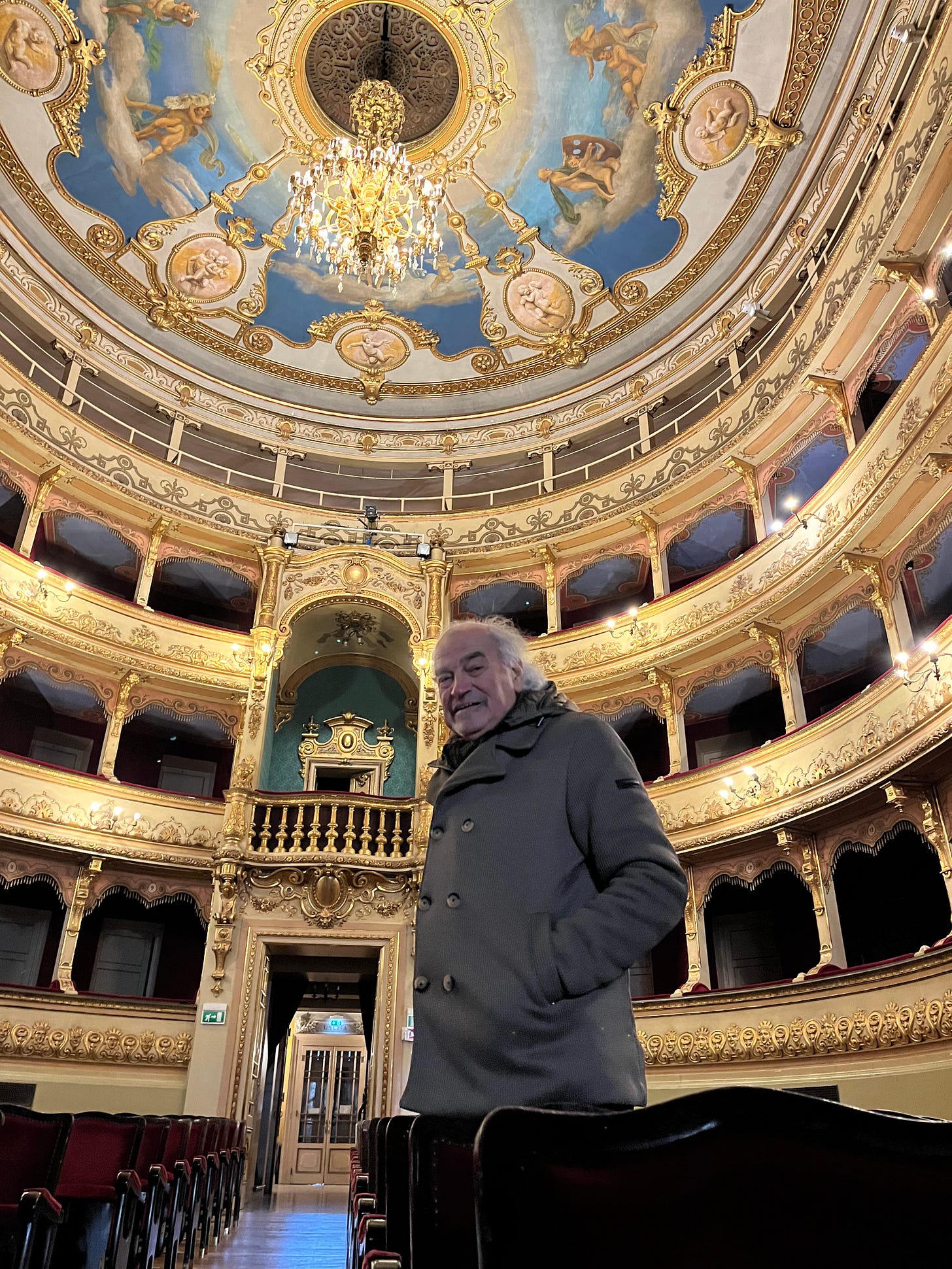
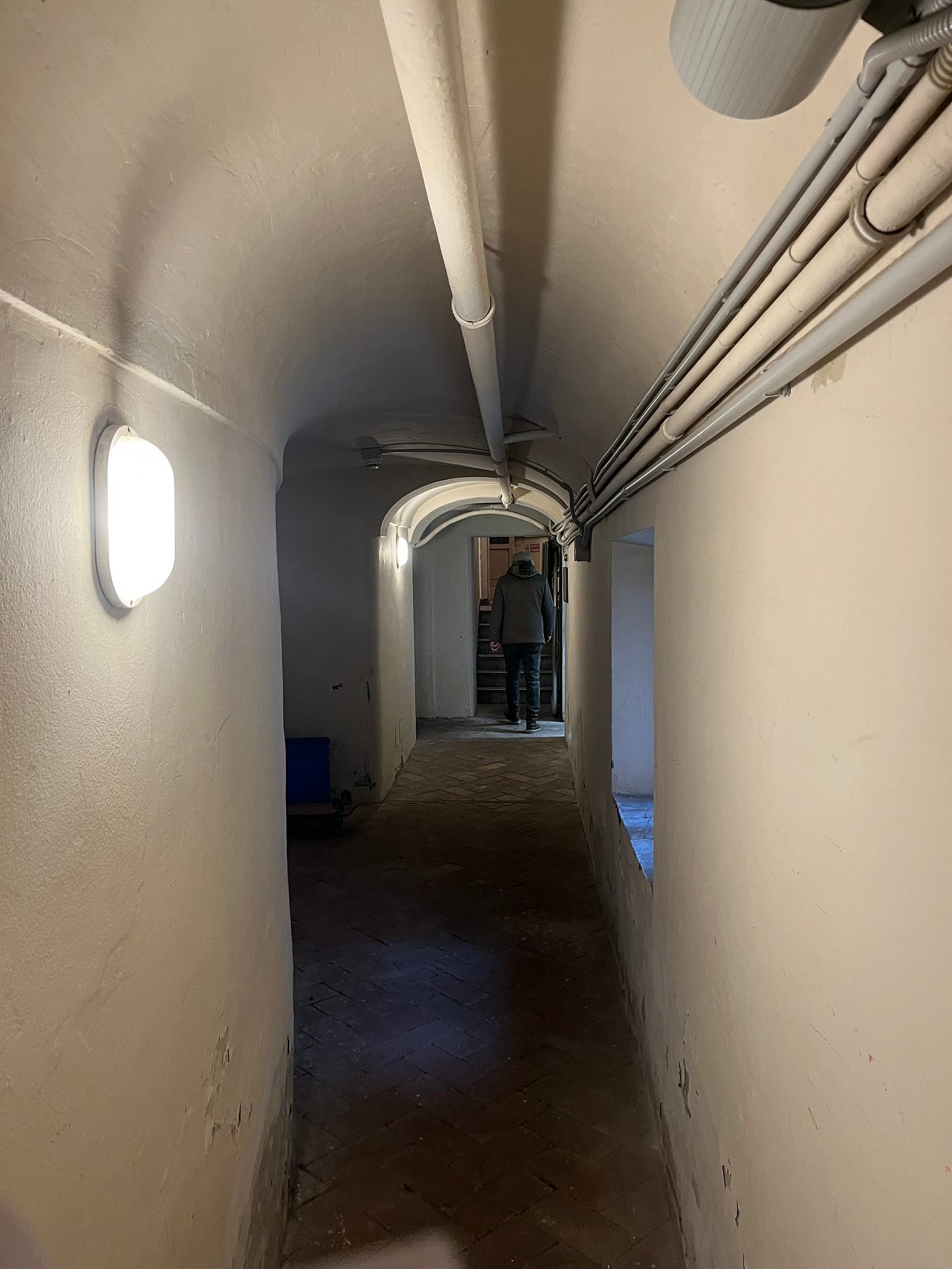
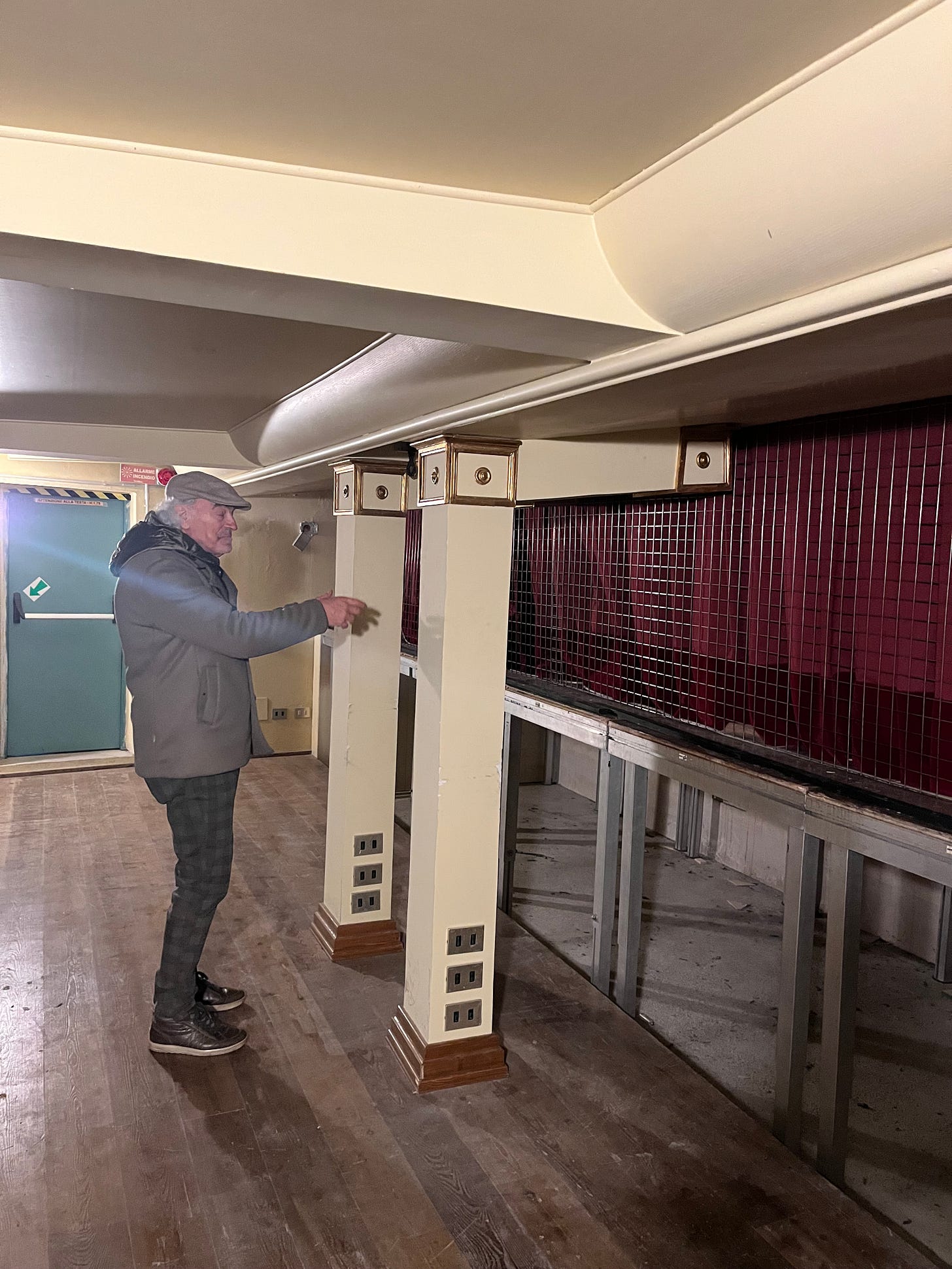
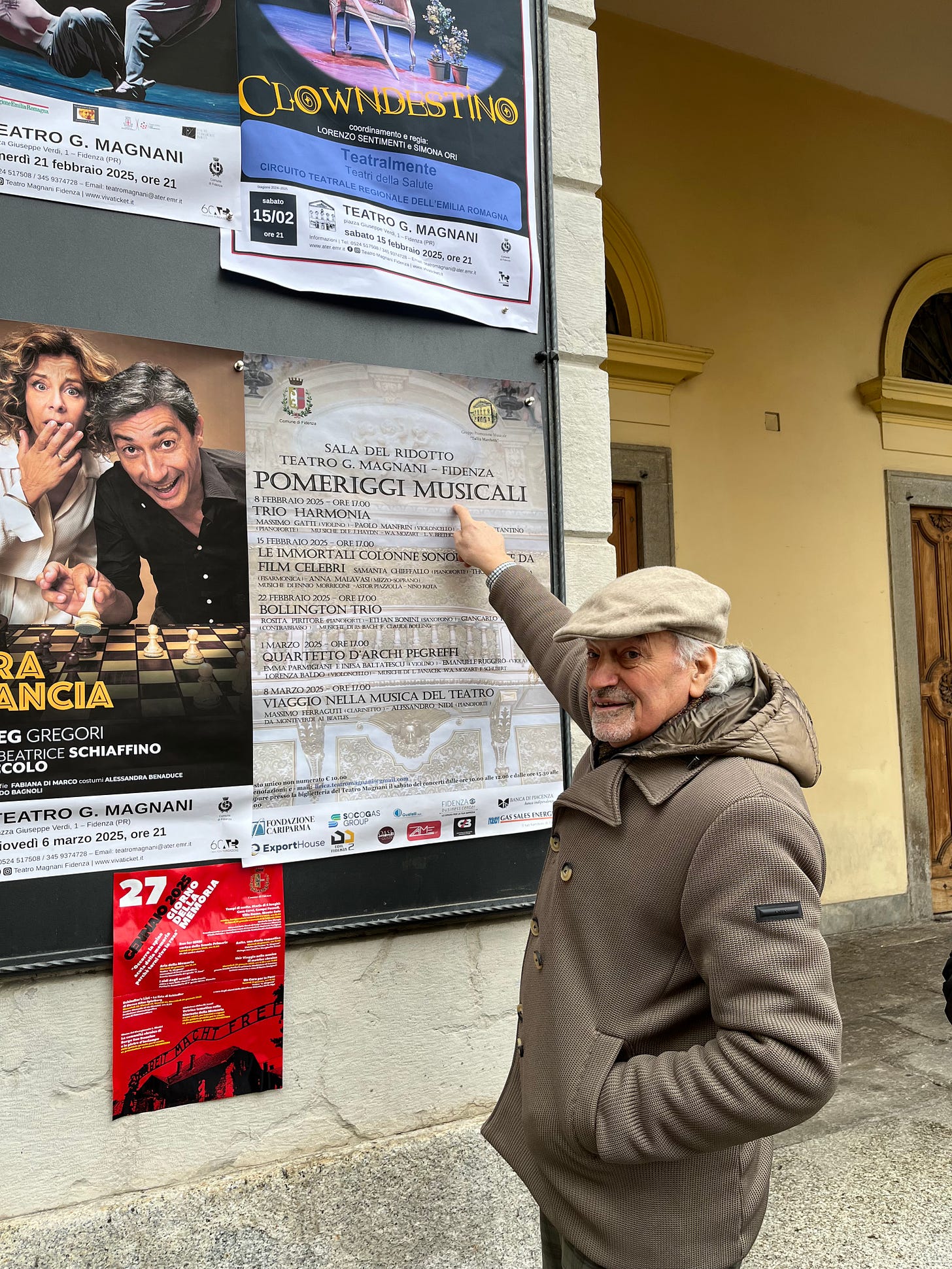
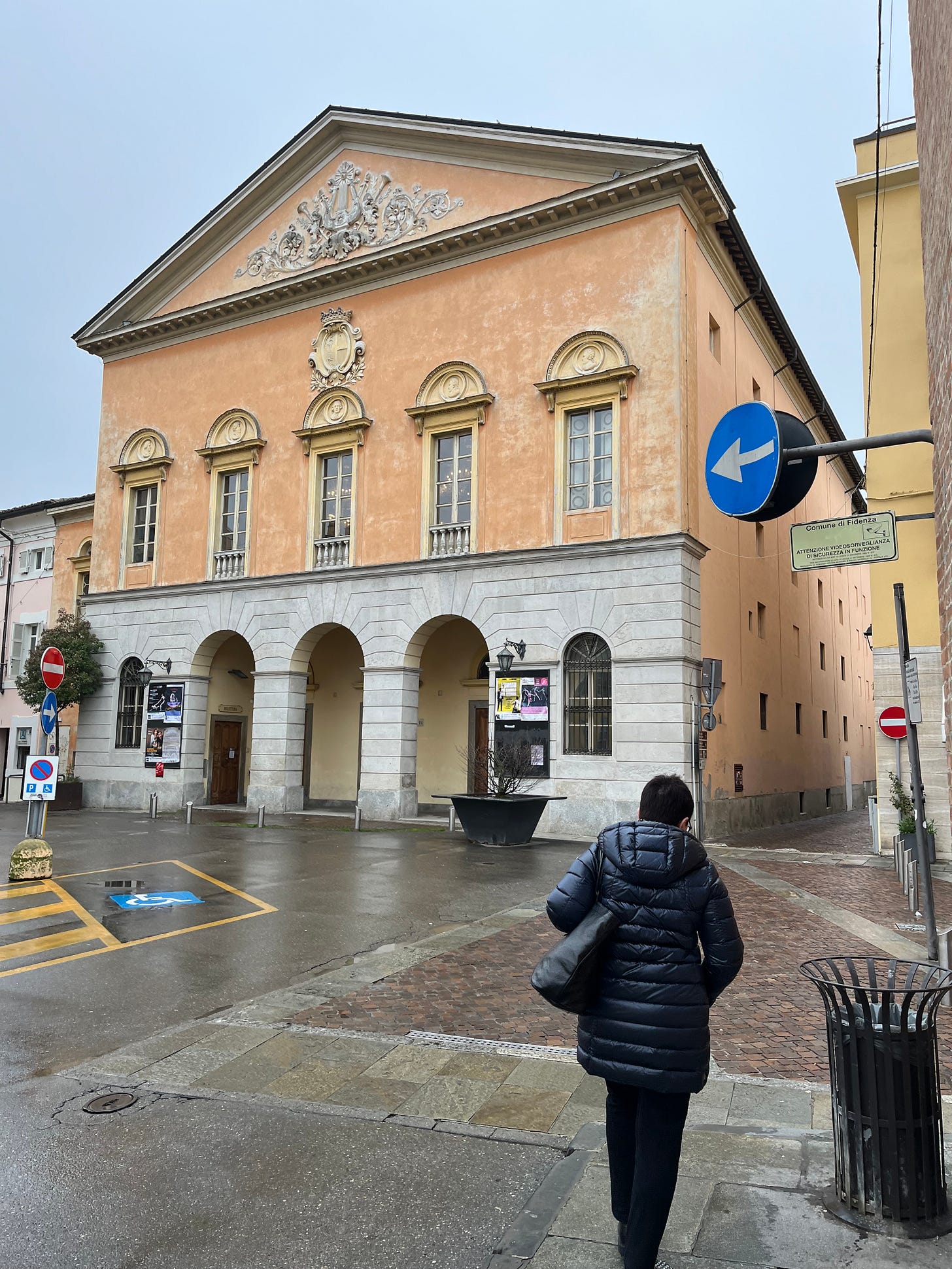
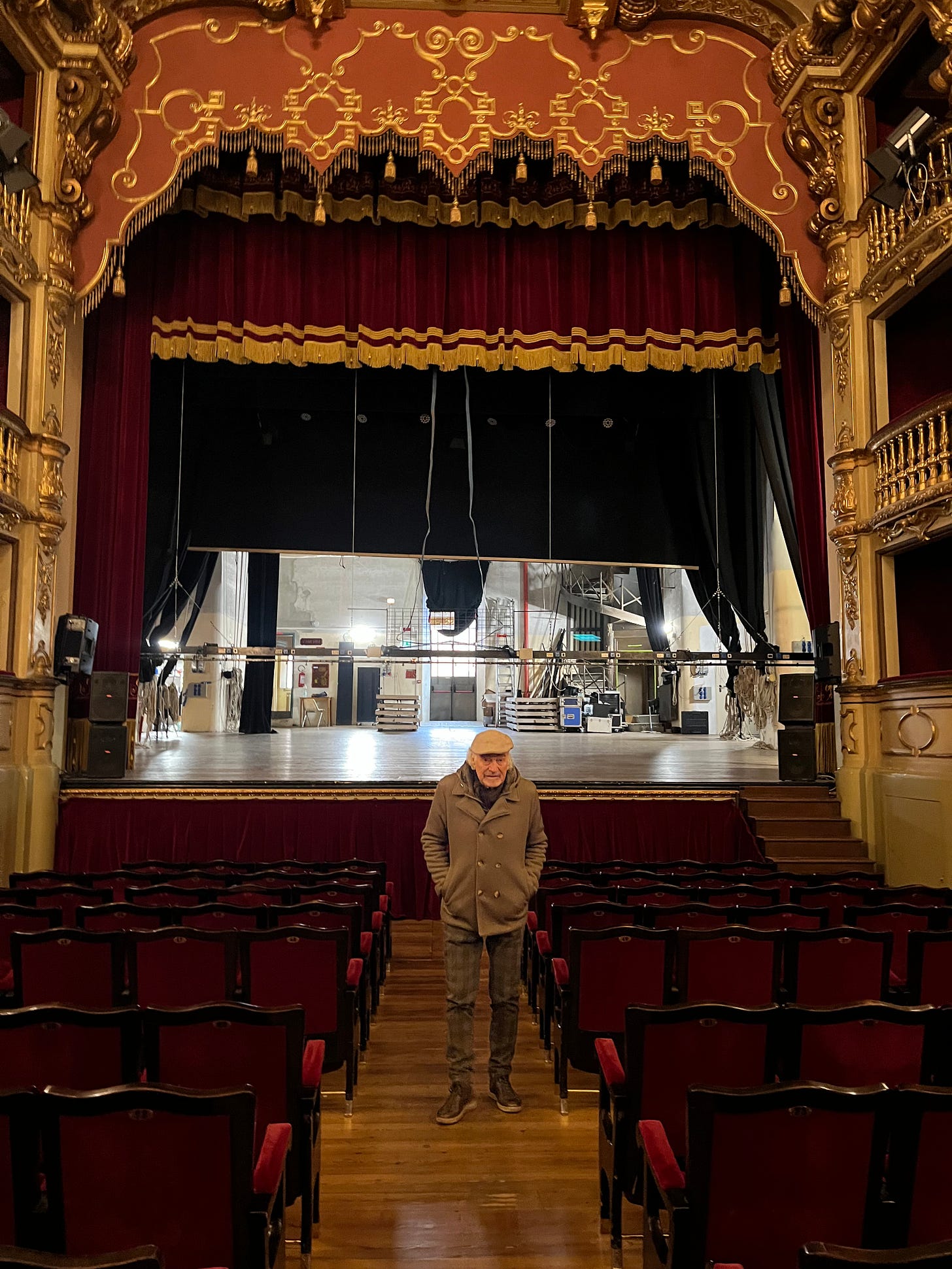
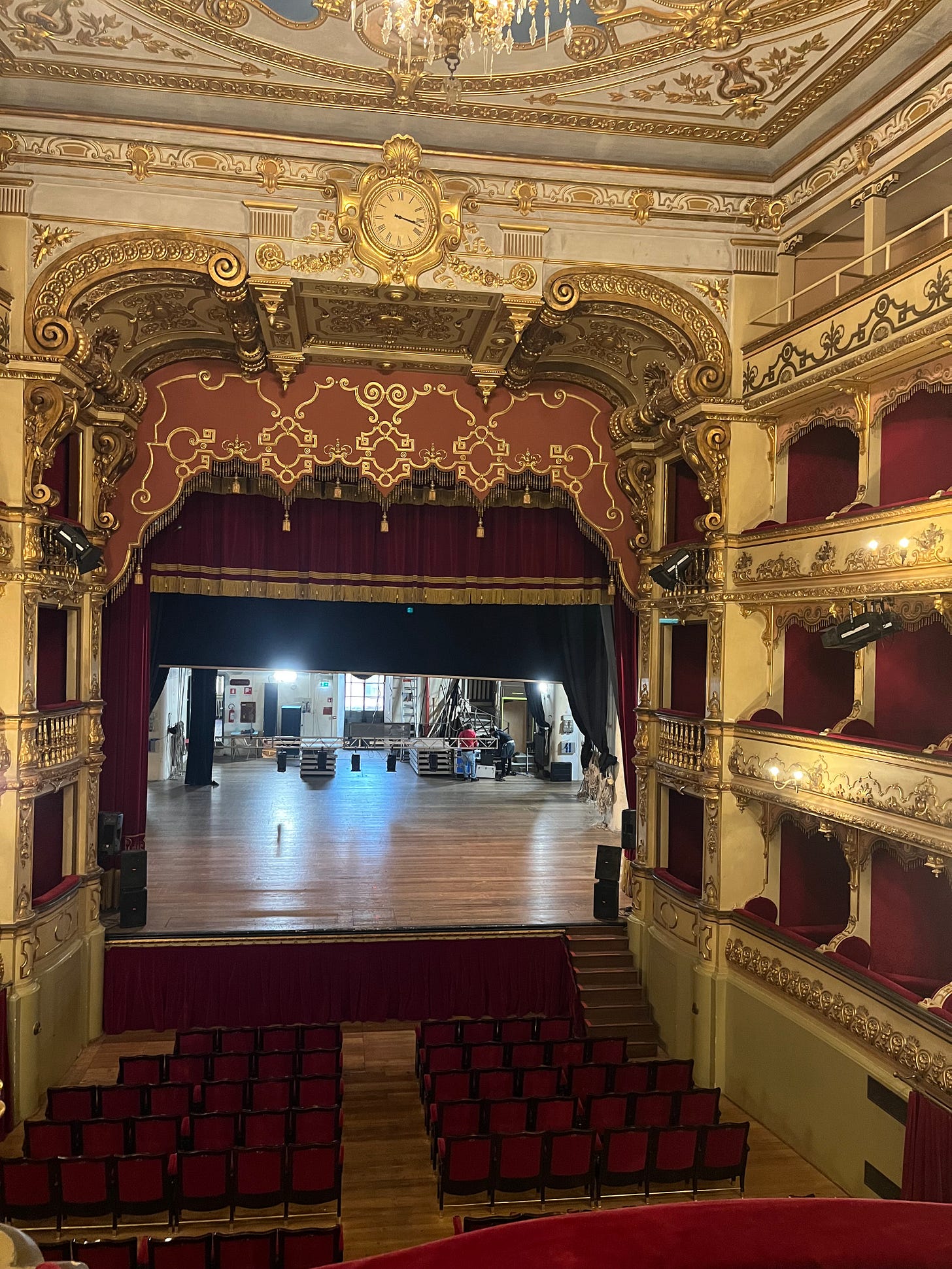
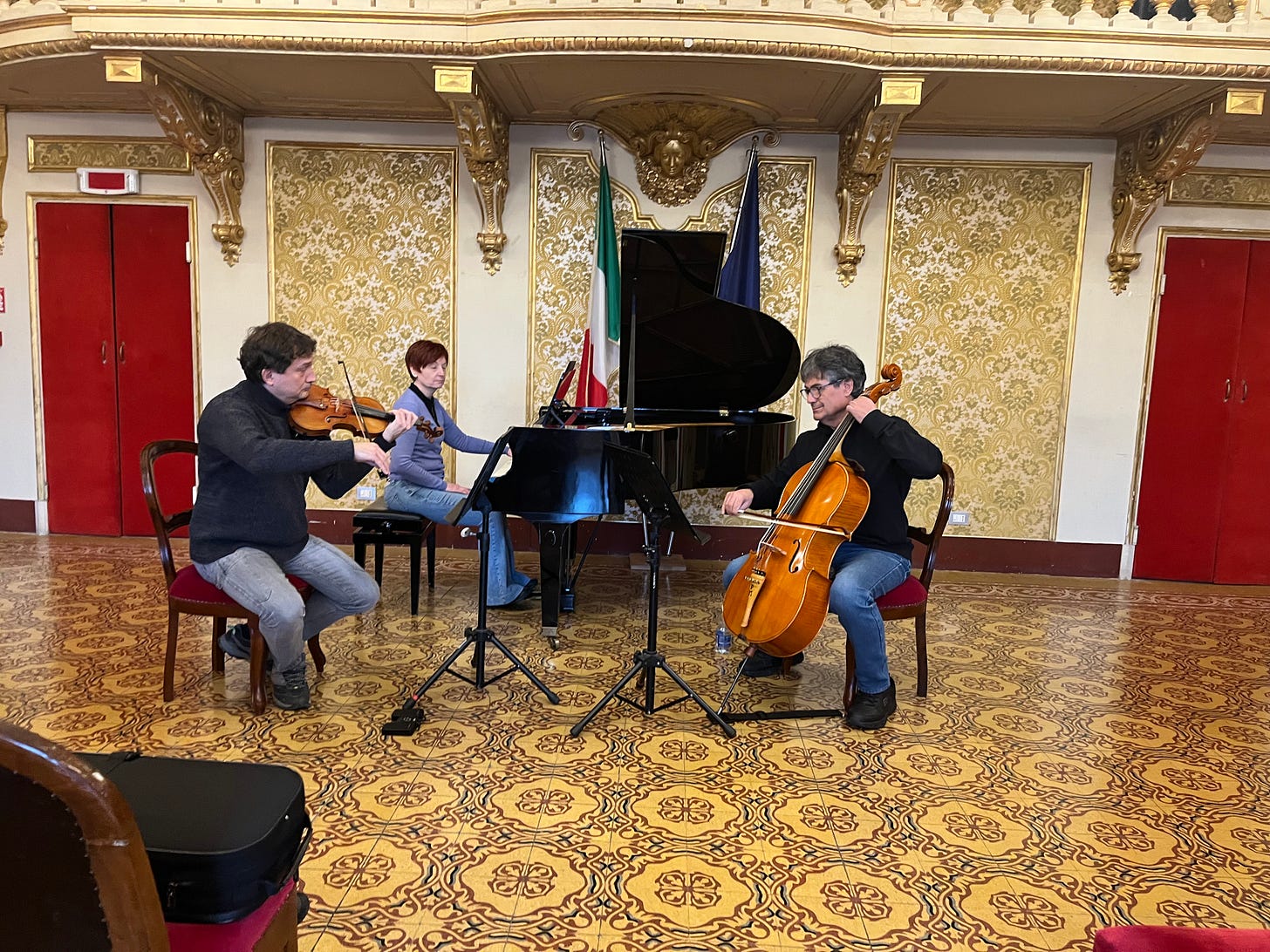

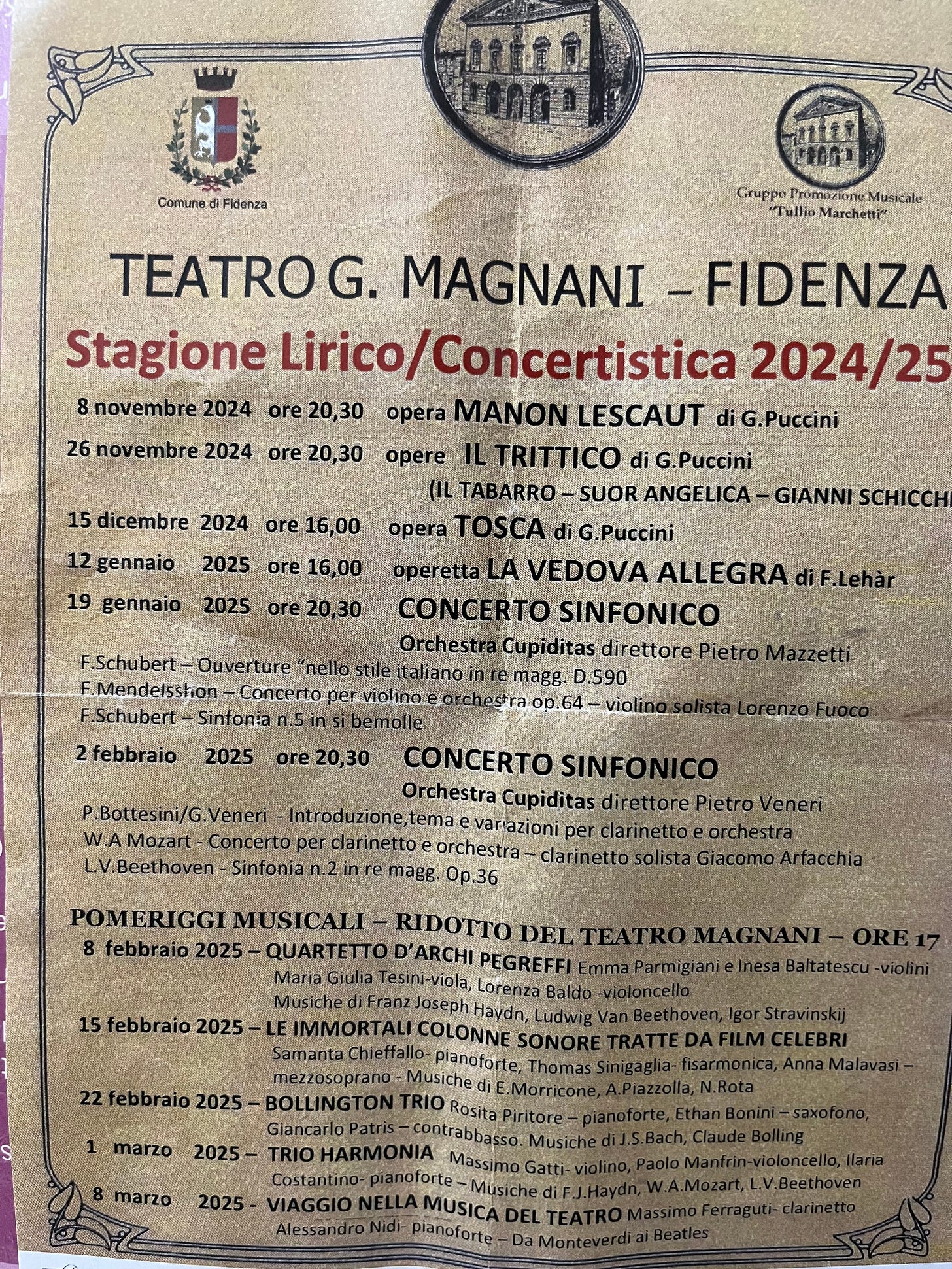
What a gorgeous opera house! It’d be so cool to see an opera or concert there. I bet Mr. Delnevo loves his job.